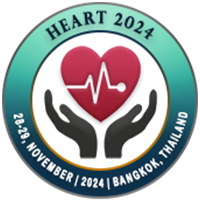
Haruya Yamane
Japan, Osaka National Hospital, JapanTitle : Indication of non-surgical Management for Acute Limb Ischemia and Temporary Endoluminal Bypass (TEB) technique
Abstract
Acute limb ischemia (ALI) is a sudden decrease in limb perfusion that has a potential threat of life and limb viability. Although, surgical revascularization using an occlusion catheter (Fogarty catheter) has long been the standard approach for revascularization, non-surgical treatment including endovascular treatment (EVT) has recently been developed as alternative to surgical revascularization. There are several non-surgical treatments for ALI such as percutaneous aspiration thrombectomy (PAT), catheter-directed thrombolysis (CDT), angioplasty and stent implantation. We summarized their indication and introduced our original endovascular technique. PAT is recommended for the patients with ALI in small vessels such as below-the-knee arteries. CDT can be used only in Rutherford grade I, which is defined as viable limb without immediate threat of amputation. Angioplasty and stent implantation are applicable for any ALI patient. However, we sometimes cannot achieve successful revascularization by these procedures. We previously reported our original endovascular technique using a guide extension catheter, which is named “temporary endoluminal bypass (TEB) technique”. TEB technique is based on the concept of a distal perfusion and applied for a treatment of ALI. The procedure is composed of 3 steps. First, we measure the lesion length. Second, we deliver the guide extension catheter to cover the lesion fully. Finally, distal blood flow can be observed by angiogram. Subsequently, urokinase (10,000 U/hr) is selectively administered to the vessel from the sheath. The endpoint of thrombolysis is determined by the achievement of antegrade blood flow after removal of the guide extension catheter. Our first case of TEB technique is the patient with ALI in popliteal artery. After failure in the revascularization by conventional EVT treatment, we performed TEB technique and revascularization was successfully achieved. We are sure that TEB technique can be one option of non-surgical treatment for ALI.

